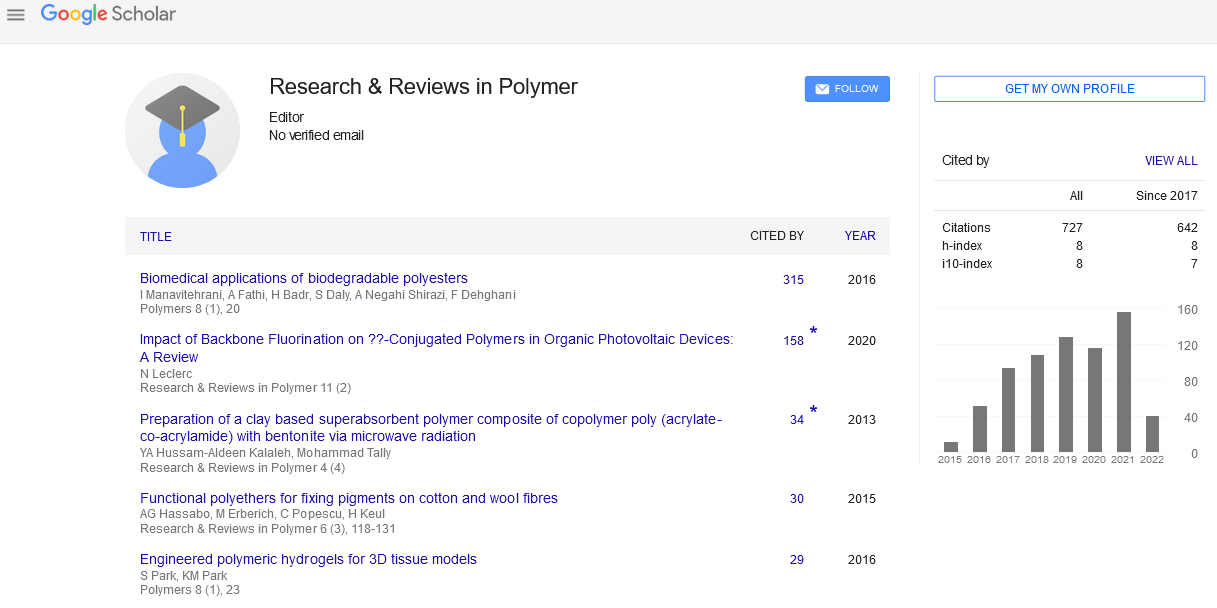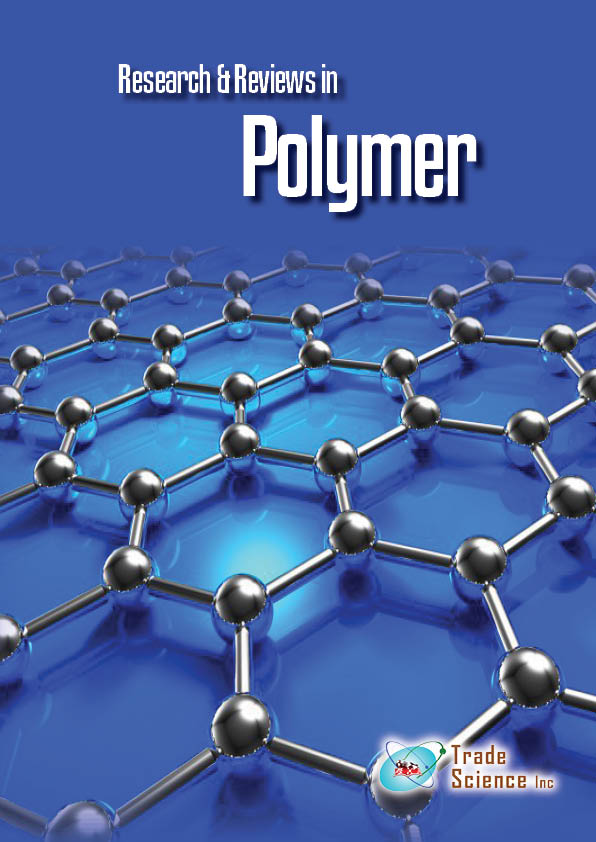Abstract
In situ Catalytic Bulk Copolymerization of Maleate Surfmer-Methyl Methacrylate Using TiO2 and V2O5 at Different Conditions
Author(s): Sanaa M Solyman , Elsharaky EA and Amira E El-TabeyA remarkable number of studies were undertaken on the polymerization of surfmers. Surfmers have the advantage of combining the physical behavior of surfactants with the reactivity of monomers. A huge kind of surfmer structures that vary in terms of polar functional groups (lipophilic and hydrophilic balance) and the location of the polymerizable moiety have been identified. Examples include cationic, anionic, nonionic and zwitterionic surfactants. The conventional polymerizable compounds that have been used include acrylic, styrene, acrylamides and methacrylic. The polymerizable surfactants are interesting in diverse fields. Several investigations were carried out on maleic anhydride copolymers to be used as polymeric surfactants. It was declared for many years that maleic anhydride shows only a small tendency for radical polymerization, while 1,2-disubstituted ethylene does not polymerized. We used different radical initiators in order to polymerize the maleic anhydride and obtained a polymer which consists mainly of cyclopentanone derivatives by partial decarboxylation. Schneider and Heseding prepared homopolymer of maleic anhydride by γ-irradiation. The polymer acquired by initiation through irradiation showed the structure of anhydride without discoloration and decarboxylation. Catalytic methods enable the production of many materials inclusive of polymers, pharmaceuticals, detergents, plastics and many others.

